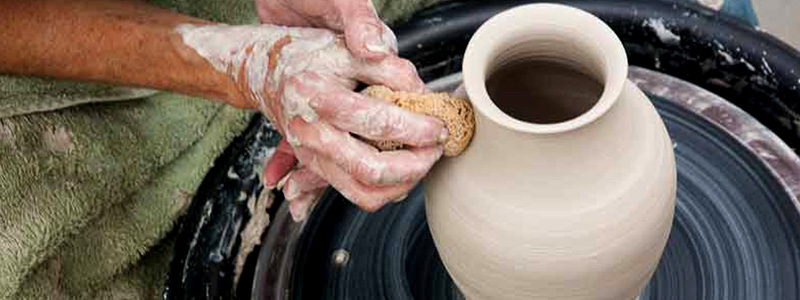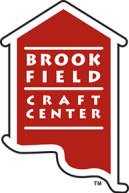Clay Studio:

Most clay classes at Brookfield Craft Center are categorized as high fire or low fire classes. These terms refer to the temperature at which the clay is fired in the kiln, but also define the types of clay, glazes and techniques used and aesthetics achieved in each class. Throwing refers to using the potter’s wheel to form shapes while hand building refers to slab, coil and pinch techniques.
Classes run throughout the year. There are usually weekday and evening classes. Participation is generally limited to 10 students.
EARTHENWARE / LOW FIRE
Earthenware is considered a low fire clay, and is fired in our electric kilns. Glazes retain stability at lower temperatures, so you can achieve bright colors and detailed designs. Lower temperatures also mean that the clay does not fully vitrify (or fuse), so that the glazes are what give low fire ceramics their waterproof qualities. Historically, low fire clay was red, like terracotta. Now low fire clay is also readily available in light and white colors.
STONEWARE / HIGH FIRE
Stoneware and porcelain are high fire clay, and are fired at cone 6 in our electric kilns. As hard as stone, these clays fire to be strong and waterproof. Because the clay fully vitrifies (or fuses), it can be made into thin and delicate pieces and still remain strong. Ceramicists have less control of the end result of high fire glazes, creating unique, one-of-a-kind surfaces.
Open Studio:
Work independently in BCC’s Clay Studio at any scheduled open studio sessions. Enjoy this time to work on class projects and practice techniques. Eligible participants are current or recent BCC students who have completed at least one class within the past 12 months. Current BCC members are also eligible to participate if they possess basic skills as determined by the studio monitor.
